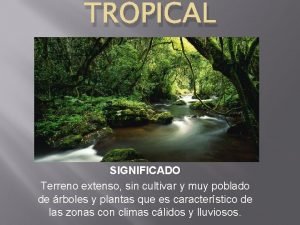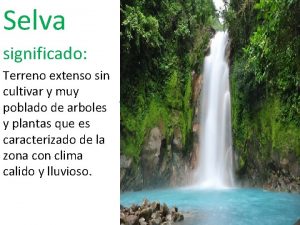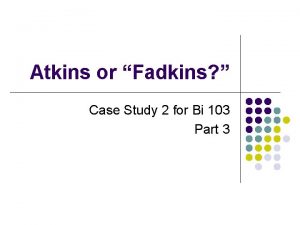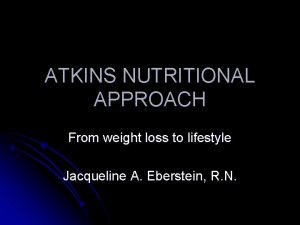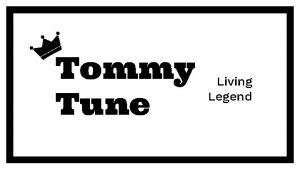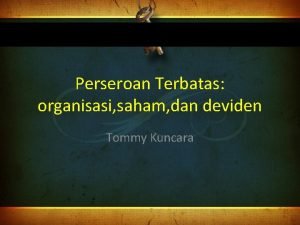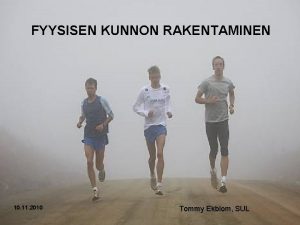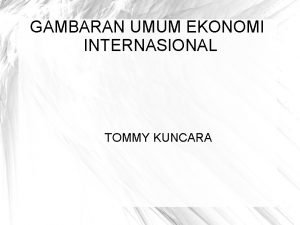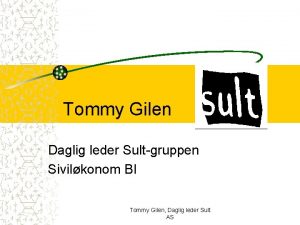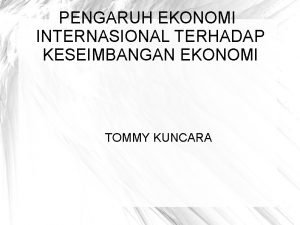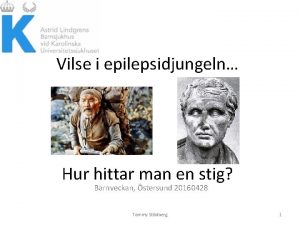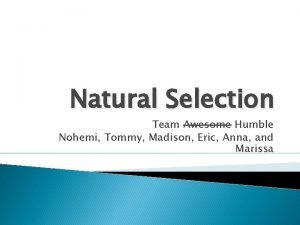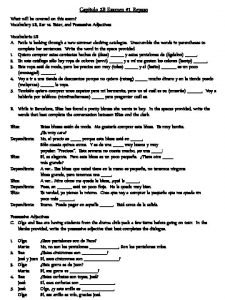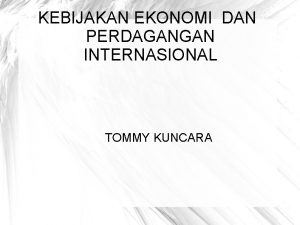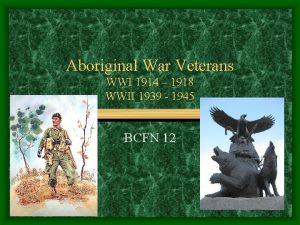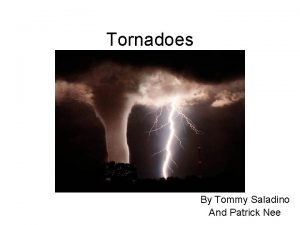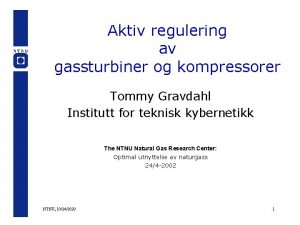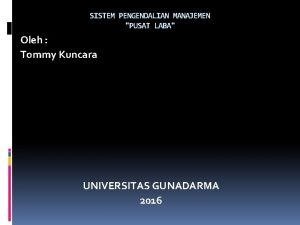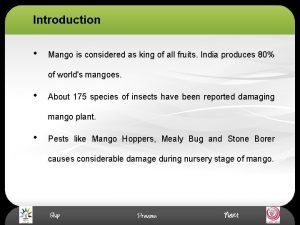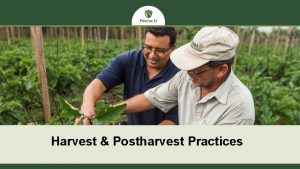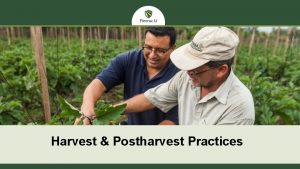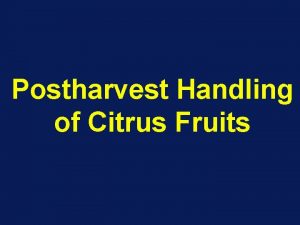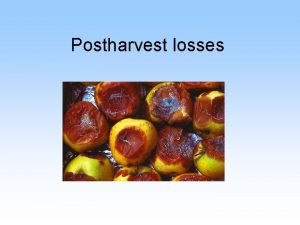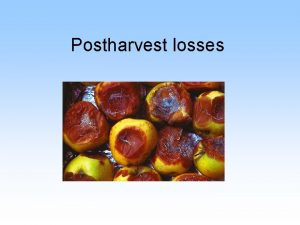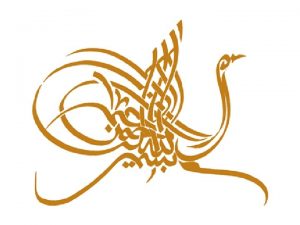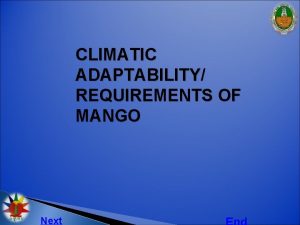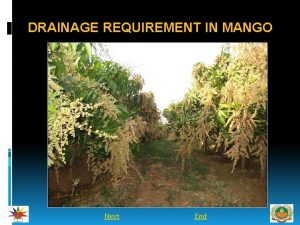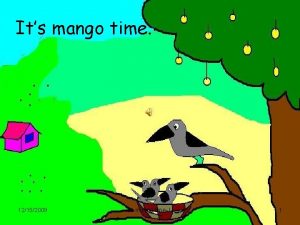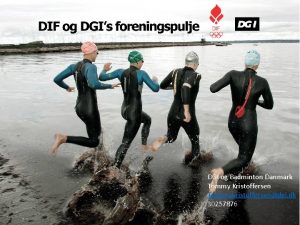Postharvest Handling of Mango Cultivar Differences Tommy Atkins























































- Slides: 55

Postharvest Handling of Mango

Cultivar Differences Tommy Atkins Mango Kent Mango Haden Mango Ataulfo Mango Keitt Mango

Assessing Maturity & Eating Quality Potential • Maturity at harvest determines eating quality potential • Skin color – Dark green to light green in some cultivars – Red color is not related to maturity or ripeness • Fruit shape – Fullness of cheeks – Shape of shoulders • Internal flesh color – Greenish-white to yellowish-orange

Skin Color Skin color is not always related to internal color and ripeness!

Ataulfo Color Stages 1 2 3 4 5 Fernando Maul

Tommy Atkins Color Stages 1 2 3 4 5 Fernando Maul

Fruit Shape • Fullness of cheeks • Elevation of shoulders above the stem attachment Immature Mature

Mango Maturity and Ripening Charts

European (OECD) Standards. Mango Maturity Not allowed Underdeveloped immature Not allowed Not sufficiently mature to continue ripening process ALLOWED Mature Fruit Not allowed Overripe Fruit

Changes Associated with Mango Ripening • Skin color changes from green to yellow (in some cultivars) • Flesh color changes from greenish-yellow to orange (in all cultivars) • Decrease in flesh firmness and increased juiciness • Starch is converted into sugars • Increase in soluble solids content • Increase in carotenoids and decrease in chlorophyll content • Increase in characteristic aroma volatiles

Changes with Ripening Very Hard (1) Sprung (2) Near Ripe (3) Ripe (4)

Harvest • Mangos are harvested when the fruit have reached their full size and have begun to ripen, which starts inside the fruit • The fruit are carefully detached so that they don’t fall to the ground, and are collected in plastic field crates

Harvest tools that allow retention of stem prevent latex staining Angle of the hook is important to ensure snapping the fruit with stem Mango Manila Harvest Veracruz, Mexico Marita Cantwell

Washing and Pre-sizing • First the mangos are washed, then they are pre-sized according to guidelines for quarantine treatment, when required

Hot Water Quarantine Treatment • Mangos exported to the U. S. must be immersed in 46°C/115°F water for 60 to 110 minutes depending on variety and fruit size in USDA APHIS-certified hot water treatment systems.

Hydro-cooling & Staging for Packing • After their hot bath, the mangos are cooled in water that is no cooler than 21°C/70°F as prescribed by APHIS – cool enough to guard against hot water injury – not too cool to counteract the hot water treatment’s effectiveness against fruit flies • Fruit should be packed immediately or placed temporarily in cold room at 12 C

Forced Hot Air Treatment Heat fruit to 117 F (47 C), hold 20 -30 min

Irradiation for Control of Fruit Flies Min. Dose (Gy) 250 Common Name Oriental fruit fly Scientific Name Bactrocera dorsalis Med. fruit fly Ceratitis capitata 225 Melon fly Bactrocera cucurbitae 210 Caribbean fruit fly Anastrepha suspensa 150 Mexican fruit fly Anastrepha ludens 150 West Indian fruit fly Anastrepha oblique 150 Sapote fruit fly 150 Anastrepha serpentine Queensland fruit fly Bacterocera tryoni 150 No common name 150 Bacterocera jarvisi

Packing • The mangos may be coated with carnauba wax for appearance and for protection from water loss • The mangos are sorted and graded to remove the fruit that are not good enough to satisfy the market • Most mangos are hand sized as the cartons are filled


Forced-air cooling & Refrigerated Storage • Mangos are cooled to their optimum storage and transport temperature of 12°C/54°F • Mangos may be stored at 12°C/54°F, but only long enough to accommodate shipping schedules

Common Defects • Latex staining (only affects appearance, not eating quality • Hot water injury • Decay – Anthracnose – Stem-end rot • Chilling injury

Latex Staining

Hot Water Injury Beth Mitcham

Anthracnose Decay

Decay Control • Hot water immersion – 50 to 55ºC for 1 to 5 minutes • Fungicides, may be included in hot water • Bagging before harvest • Irradiation not very effective at doses allowed

Heat Treatment Reduces Anthracnose Incidence and Severity on Mangoes

Stem-End Rot

Chilling Injury Symptoms on Mangoes • Uneven ripening • Poor color and flavor development • Surface pitting • Grayish scald-like skin discoloration • Flesh browning in severe cases

“Safe” chilling threshold temperatures* for different varieties/maturities of mangos (research is ongoing) Maturity/Ripeness Stage** Variety 1 2 3 4 5 Ataulfo** >55°F >55°F Keitt 55°F 50°F 45 -50°F 45°F Kent 55°F 50°F Tommy Atkins 55°F 45 -50°F 45°F *Based on continuous exposure for 3 weeks **Ataulfo fruit developed chilling injury at all temperatures tested; a chilling threshold temperature was not established. 1 2 3 4 5

Mango Storage Temperatures • Mature green mangos – Store/ship at 54ºF (12. 2ºC) • Ripe mangos – Store/ship at 46ºF (7. 8ºC) to 50ºF (10ºC)

Ripening Conditions for Mangoes Ethylene treatment accelerates ripening Fruit temperature: 20 to 22°C (68 -72°F) Relative humidity: 90 -95% Ethylene concentration: 100 -150 ppm Duration of exposure to ethylene: 12 -48 hours Carbon dioxide: <1% After ethylene treatment for 24 hours, mangos are ripe in 5 -9 days at 18 -22°C. Once ripe, can be held at 10 -13°C for up to 1 week.

Papaya Carica papaya


Papaya • Latex – In every part of plant – Contains two proteases • Papain and chymopapain • Sold as meat tenderizer • Tree trained to single trunk • Fruit buds form progressively higher – Oldest fruit is lowest

Maturity – minimum 11. 5% SS = 6% color MG CB ¼ COLOR ½ COLOR FULL

Maturity – minimum 11. 5% SS = 6% color EXPORT DOMESTIC

Green Islands from Skin Abrasions Chlorophyll retained Accelerated water loss

Chilling Injury • Mature green – 10 days at 2 C – 20 days at 7. 5 C • ½ yellow – 17 days at 2 C • Preconditioning (partial ripening) reduces chilling sensitivity

Recommended Temperatures • 13 C for mature green to ¼ yellow • 10 C for partially ripe (1/4 to ½ yellow) • 7 C for ripe (> ½ yellow)

Controlled Atmosphere Storage • Limited research • Optimum 3 to 5% O 2 + 5 to 8% CO 2 • Postharvest life at 13ºC – 2 to 4 weeks in air – 3 to 5 weeks in CA • Damaging atmospheres – < 2% O 2; > 8% CO 2

Quarantine Treatments • Forced hot air – Multi-staged treatment – 48. 5 C for 3 hours • Irradiation – Slowed softening – Effect depends on fruit stage at treatment • MG – no effect on softening • 30% color – slower softening after 250 Gy

External Scalding of Papaya after Heat Treatment



Methods to Reduce Heat Sensitivity • Continuous – Hold at temperature below 40 C for 2 to 4 hours • Heat Pulse – 1 hour at 38 C, wait 3 hours, then treat – 30 min at 42 C, cool to 20 C, then treat




Initial washing and sorting by maturity

Hot Water Treatment for Anthracnose Control

Marking largest fruit before hot air treatment



Questions?
 Terreno extenso sin vegetación
Terreno extenso sin vegetación Extenso significado
Extenso significado Cultivar web
Cultivar web Unc charlotte library
Unc charlotte library Atkins or fadkins case study answers
Atkins or fadkins case study answers Kippi vaught
Kippi vaught Reflective writing
Reflective writing Atkins lifestyle
Atkins lifestyle Nichole atkins
Nichole atkins Paula atkins
Paula atkins Atkins fizikai kémia
Atkins fizikai kémia Types of ergonomics
Types of ergonomics Sample atkins diet phase 1
Sample atkins diet phase 1 Tommy tune bio
Tommy tune bio Mark redekopp
Mark redekopp Contoh rumus $4$1 disebut . . .
Contoh rumus $4$1 disebut . . . Määräintervalli
Määräintervalli Maxime tremblay notaire
Maxime tremblay notaire Tommy's window slideshow prayer
Tommy's window slideshow prayer Tommy brismo
Tommy brismo Never let me go cottages
Never let me go cottages Tommy kuncara
Tommy kuncara Tommy kuncara
Tommy kuncara Tommy girard
Tommy girard Tommy yip
Tommy yip Sult gruppen
Sult gruppen Tommy pilarp
Tommy pilarp Tommy kuncara
Tommy kuncara Tommy brismo
Tommy brismo Polyspikes
Polyspikes Tommy kwon
Tommy kwon Tommy madison
Tommy madison Look! catherine ___________ a present for tommy.
Look! catherine ___________ a present for tommy. Tommy kuncara
Tommy kuncara Only a god like you lyrics
Only a god like you lyrics Tommy prince
Tommy prince Tommy chong urine luck
Tommy chong urine luck Nhdplus version 2
Nhdplus version 2 Mesocyclone
Mesocyclone Tommy nguyen oxford
Tommy nguyen oxford Tommy gravdahl
Tommy gravdahl The baseball player does 1234 joules of work
The baseball player does 1234 joules of work Tommy kuncara
Tommy kuncara Tommy kuncara
Tommy kuncara Tecnologia
Tecnologia Character sketch of county inspector
Character sketch of county inspector Tommy kern
Tommy kern Abc always be coding
Abc always be coding Tommy shawshank redemption
Tommy shawshank redemption Tommy brismo
Tommy brismo Tommy inglesby
Tommy inglesby Tommy brismo
Tommy brismo Tommy christensen gu
Tommy christensen gu Tommy kwon
Tommy kwon Maturity indices of fruits
Maturity indices of fruits Mango introduction
Mango introduction
